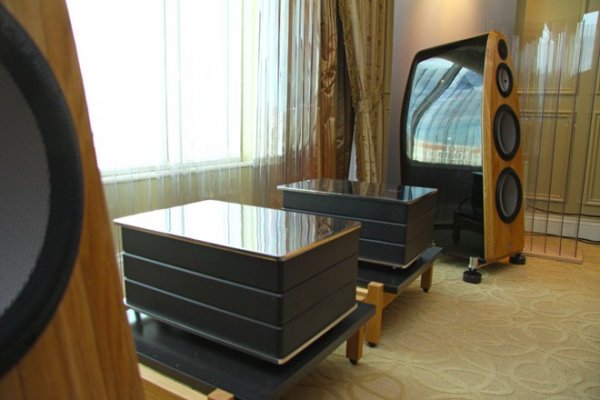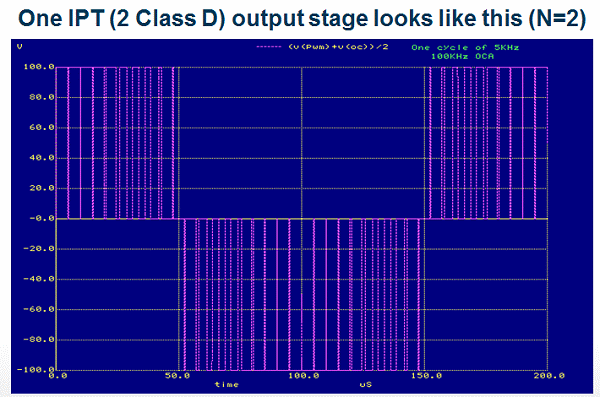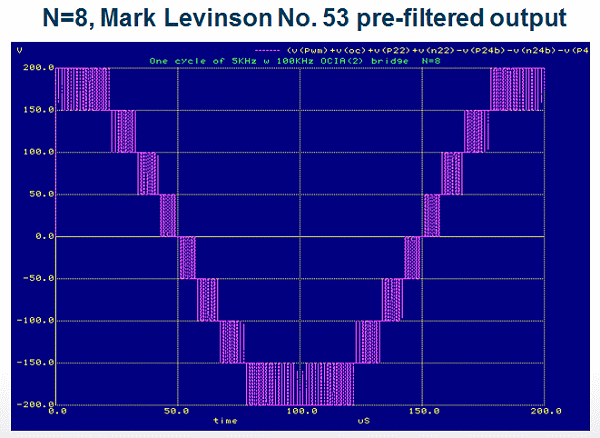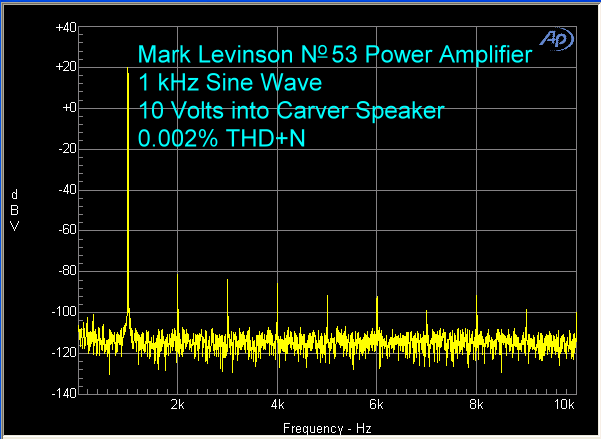I am surprised about this tag line which seems to have been used elsewhere but doesn't reflect what Marten says itself about the amp:
"Max Power @ 8 Ohm, 1% THD / 550 W
Max Power @ 4 Ohm, 1% THD / 1000 W
Max Power @ 2 Ohm, 1% THD / 1700 W
THD @ 1 W, 8 Ohm, 20-20000 Hz / 0.0012%
THD @ 10 W, 8 Ohm, 20-20000 Hz / 0.002%
THD @ 100 W, 8 Ohm, 20-20000 Hz / 0.006%
THD @ 300 W, 8 Ohm, 20-20000 Hz / 0.02%
THD @ 400 W, 8 Ohm, 20-20000 Hz / 0.05%"
How could a distortion-free amp have THD?
Looking at the buzzwords used, it doesn't sound like anything special. While it is true that typical B&O Ice Amp runs at 380Khz so running at 600 Khz does show an improvement, it is still too low of a frequency for very clean output filter implementation. To wit, the Mark Levinson No 53 which is a class I amp (modification of class D) runs at effective rate of 4 MHz or almost 7X higher frequency. That amp retails for $25K each so it is only slightly more expensive.
The word "servo" essentially means feedback. It is with that feedback that they are achieving lower distortion than it would be otherwise.
Why are filters and feedback important concepts here? Because this is what typically comes out of a class-D amp before you apply one or both:
Doesn't look anything like a sine wave, now does it? All of those harmonics need to be filtered without impacting passband of the source frequencies we like to hear.
Here is the output of the Mark Levinson, again prior to filtering:
A hell of a lot cleaner and of course, easier to filter out.
Another issue with distortion measurement is the load. Class D amps are highly sensitive to load variations because the load becomes part of the output filter. In a subwoofer, you know the load so you can optimize the filter for that specific load. In a general purpose amp, you don't know the load and it takes far more skill to design the filter and the rest of the amp such that it still performs well. So in a general sense, the numbers spec'ed by Marten really have no meaning without knowing the load that was used. Indeed, the typical measurement setup for class D amps calls for using filters to get rid of ultrasonic distortion!
Here is the measured performance of the No 53 just done by Homethaterhifi magazine into a real speaker as noted:
You can read more about this topic in their review:
http://www.hometheaterhifi.com/powe...levinson-no-53-monoblock-power-amplifier.html
Marten co-designed this amp with B&O. My recent experience with B&O modules even when paired with linear power supplies has been poor. I find them noisy and very harsh sounding. With an oddness that is hard to put your finger on. No doubt they have made improvements over their cheap modules they sell to everyone else to arrive at this product. But without more data as to what they have done other than mentioning terms like servo, it is hard to say where the innovation is. The amp certainly is not distortion-free per their own admission so right at the start, we have hyped up marketing which doesn't bode well in my book.
























